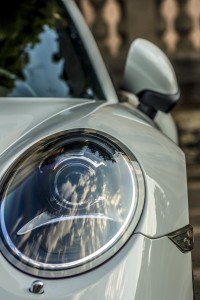 Whether you are driving along the I-5 or are moving at slower speeds through a shopping area and get hit by a Google self-driving car, are you eligible to file a car accident claim? If there is no driver in the self-driving car—as its name suggests—who can be held liable for the collision? According to a recent article in The Guardian, a traffic collision involving a Google self-driving car and a city bus recently occurred in California. While the accident report did not indicate liability for the crash, if Google is found to be liable, “it would be the first time one of its SUVs caused an accident while in autonomous mode.”
Whether you are driving along the I-5 or are moving at slower speeds through a shopping area and get hit by a Google self-driving car, are you eligible to file a car accident claim? If there is no driver in the self-driving car—as its name suggests—who can be held liable for the collision? According to a recent article in The Guardian, a traffic collision involving a Google self-driving car and a city bus recently occurred in California. While the accident report did not indicate liability for the crash, if Google is found to be liable, “it would be the first time one of its SUVs caused an accident while in autonomous mode.”
Self-driving cars might sound like pieces of technology that could not possibly exist today, but they do. While California state law requires that a self-driving vehicle’s test driver be in the front seat in the event that something goes wrong, more and more Californians are seeing these vehicles on the road. Are they safe for use? Or are they likely to cause more auto accidents?
Recent Incident Involving California City Bus and Self-Driving Car
According to the article, the recent traffic collision occurred when a Google self-driving car struck a public bus on a Mountainview, California city street. At the time of the collision, the car had been moving at 2 miles per hour, while the bus was traveling at speeds of 15 miles per hour. In the accident report, Google indicated that “its car was trying to get around some sandbags on a street when its left front struck the right side of the bus.” The vehicle’s test driver reportedly “thought the bus would yield.” Google’s accident report noted that the test driver “did not have control when the collision happened.”
No one was injured in this accident, which holds true of all previous crashes involving Google self-driving vehicles. However, as you might have guessed, this is not the first time that Google automated vehicles have been involved in collisions. In most incidents, Google does not appear to have been at fault as the cars were involved in rear-end accidents.
Mistakes and Near-Misses with Automated Vehicles
Earlier this year, another article in The Guardian reported that Google self-driving vehicles have “not yet caused a single accident on public roads” (not taking into account, of course, the recent collision in Mountainview). However, the lack of Google’s liability in car accidents, according to the article, is “not for want of trying.” The autonomous vehicles that are continually being tested by Google in various parts of California have “experienced 272 failures and would have crashed at least 13 times if their human test drivers had not intervened.” That data comes from information provided by Google to the California Department of Motor Vehicles.
Makers of automated vehicles largely have been opposed to California’s law that self-driving vehicle manufacturers must report incidents in which a human test driver had to take control to of the vehicle. Google has been among those opposed to this condition, arguing that human test drivers often take control for harmless reasons that have nothing to do with accident prevention. According to Consumer Watchdog, “self-driving cars still need a human driver behind the wheel” to ensure safety. California lawmakers tend to agree. While automated cars may be gaining in popularity, the most recent collision in Mountainview suggests that complete automation—in which no humans are present in the front seat to take control in the event of a near-accident—may be a ways away.
If you or someone you love suffered injuries in a car accident, a dedicated San Diego car accident lawyer can discuss your options with you today. Contact the Walton Law Firm to learn more about how we can help with your claim.
See Related Blog Posts:
Wrong-Way Car Accidents and Driving Under the Influence
Rising Highway Deaths in California
 North County San Diego Injury Lawyers
North County San Diego Injury Lawyers








